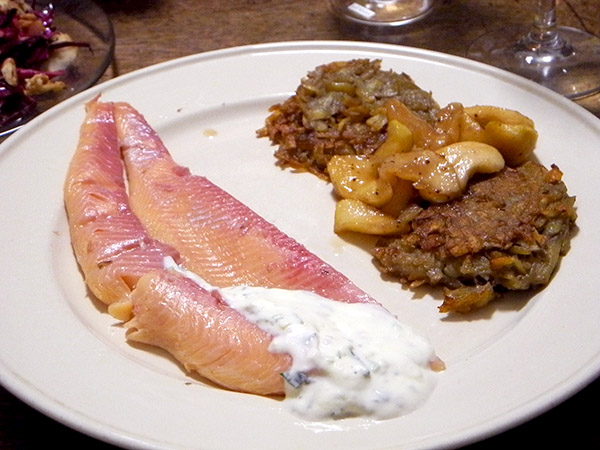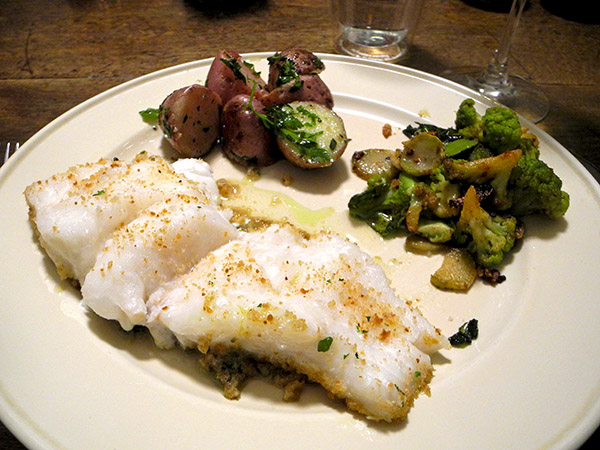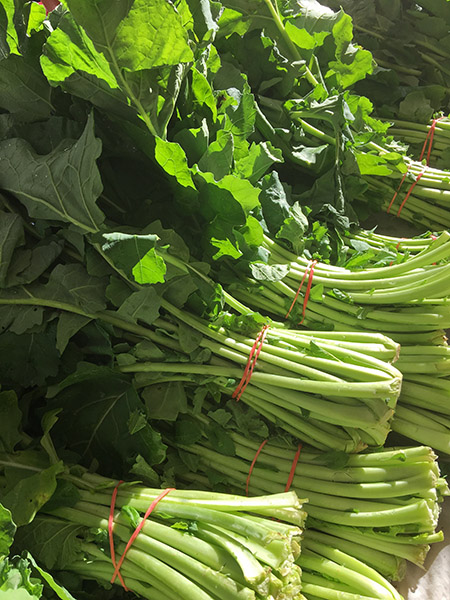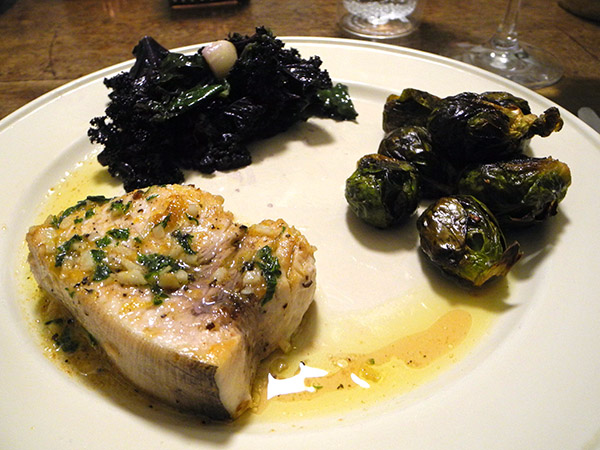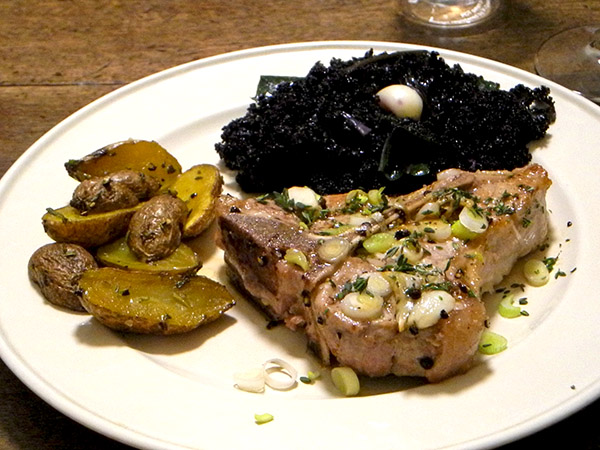This is the German-isch meal I had anticipated in the immediately previous post. It was to be an excuse to enjoy a pretty decent riesling, and an all-too-infrequent visit to the food of the Wagner ancestral Heimat.
The wine was in fact more than pretty decent, the food as well, and das Kocherei meant more than a little Sehnsucht nach dem Rheinland.
- one twelve-ounce smoked rainbow trout from Dave Harris’s Max Creek Hatchery in the Union Square Greenmarket, portioned for two servings, accompanied by a cream sauce, a mix of créme fraîche, a little plain yoghurt, both from Ronnybrook Farm Dairy in the Greenmarket, a little softened rich unsalted Kerrygold Irish butter from Westside Market, finely sliced scallions from John D. Madura Farm, organic lemon juice, ground white pepper, a bit of sea salt, and chopped tarragon from Stokes Farm
- four potato pancakes (kartoffelpuffer), part of a new frozen food venture being introduced by Franca Tantillo and Brian Zuckerberg at Berried Treasures, also in the Greenmarket, defrosted, heated on top of the stove in olive oil and a little butter, and served with a simple applesauce I had cooked for half an hour late that afternoon using 4 aging and slightly bruised small apples from Berried Treasures, some Red Jacket apple cider and a smaller amount of Eve’s Cidery‘s ‘Bittersweet‘ (“naturally sparkling cider; fermented in the bottle”), both from the Greenmarket, a little turbinado sugar and a pinch of cinnamon freshly grated from a stick I keep in the spice cabinet for these special occasions
- a red cabbage salad, arranged on a plate to the side, a somewhat loose interpretation of a Kurt Guttenbrunner recipe which I had cut out of ‘New York’ Magazine 10 years back, using part of a small cabbage from Paffenroth Gardens Farm and one aging Rhode Island Greening apple from Berried Treasures which I had been keeping in the refrigerator since early in the fall
- the bread was a small Eric Kayser multigrain and multiseed loaf, ‘Pain aux Cereales‘; the accompanying butter (this is Germany, after all) was unsalted Kerrygold Irish butter, from Westside Market
- the wine was a German (Nahe) riesling, from Kruger-Rumpf , Münsterer Dautenpflänzer Riesling Spätlese 2014, purchased from Flatiron Wines & Spirits
- the music was Anton Bruckner, Symphony No.5, performed by Giuseppe Sinopoli and the Staatskapelle Dresden
